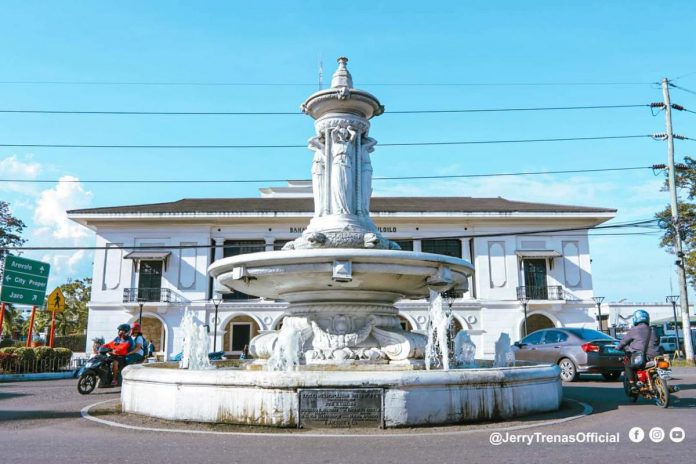
ILOILO – The Arroyo Fountain on Bonifacio Drive, City Proper, declared an Important Cultural Property (ICP) by the National Museum of the Philippines (NMP), will undergo rehabilitation.
The provincial government allocated P1,801,928.44 for it.
The Sangguniang Panlalawigan (SP) recommended adopting the committee report of 4th District’s Provincial Board member Rolando Distura authorizing Gov. Arthur Defensor Jr. to sign a contract agreement for the rehabilitation.
“The Arroyo Fountain is historically significant kag may heritage value gid sa aton sa probinsya kag sa mga Ilonggo,” said Distura, chairperson of the SP committee on infrastructure, in an interview with Panay News.
He did not give a timeline as to when the rehabilitation will begin but he expects that the governor has given contractor MJ Barcelona Construction and Supply a notice to proceed.
Based on the project program prepared by the Provincial Engineering Office, the rehabilitation includes steel works like panel grills, plumbing and electrical works, and repainting.
The Arroyo Fountain in front of the Casa Real de Iloilo, or old Iloilo provincial capitol, was named after Sen. Jose Maria Arroyo, the grandfather of former First Gentleman Jose Miguel “Mike” Arroyo and author of Republic Act 3222, which established the Iloilo Metropolitan Waterworks in 1925.
It also stands as “Kilometer Zero”, the benchmark used to measure distances from Iloilo City to other points in Panay Island.
The fountain is a sculpture composed of four originally naked Grecian muses holding overhead a large basin that is overflowing with water gushing from a spout at the top and flowing down to gather in a larger collective basin. However, in 1929, at the insistence of the Roman Catholic Church, the naked muses were “clothed” in flowing garments and underwent re-sculpting to appear as they do today./PN






